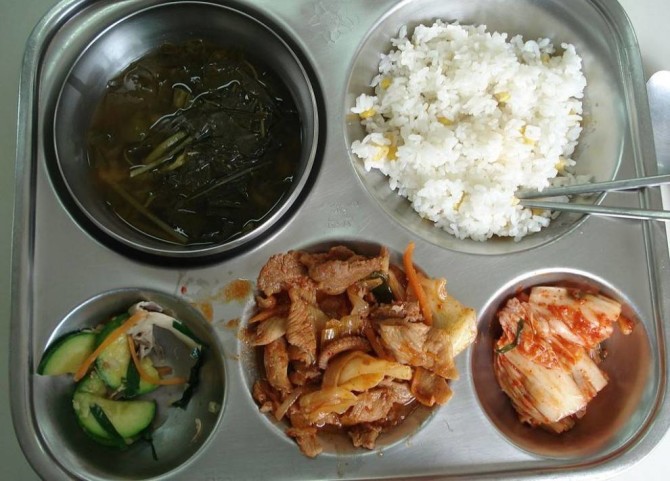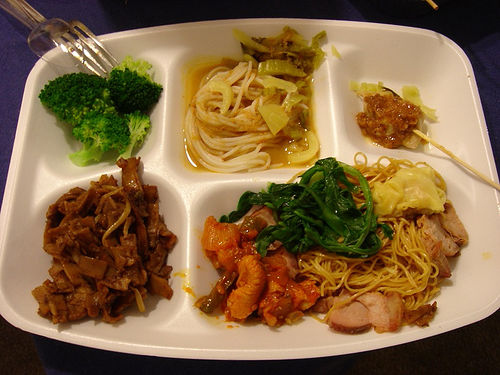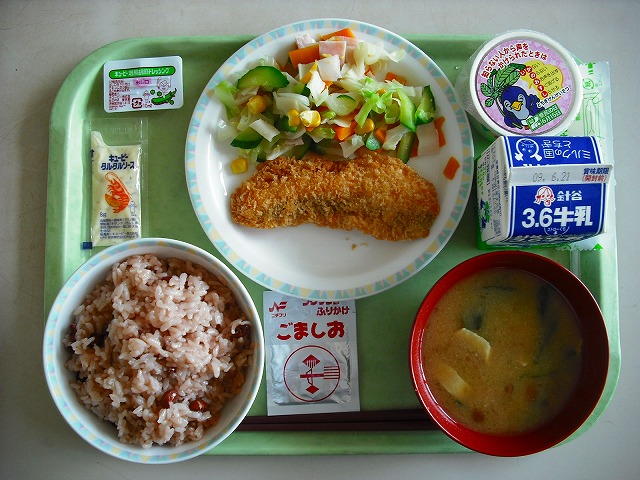Time somehow goes by slower when you are younger — at least that’s how I felt in elementary school. One thing got me through a long day was a lunch time, and I remember counting the minutes until a lunch break chime everyday. Peanut butter and jelly is a classic lunch and undoubtedly delicious, but some people debate it’s not the healthiest option. Last year, sweetgreen educated us about healthy lunches that kids in other countries eat. How different are the lunch meals at schools overseas from your nostalgic lunch? Let’s take a look.
1. France

Photo Courtesy of flickr.com
The French stay French no matter how old they are. The menu includes mussels, artichoke, grapefruit, lemon tart, baguette, fries and yogurt. Isn’t it too extravagant for school food? In France, school lunches are taken seriously as regular meals, and that’s how French children develop their palates. No, there is no wine or champaign provided.
2. Sweden

Photo Courtesy of whatsforschoollunch.blogspot.com
Swedish lunch is typically served with a warm main dish, like a stew with potatoes, with a side dish. The side dish contains “knäckebröd,” the famous Swedish crispy bread, and salad or cooked vegetables. Students can choose to drink water, milk or lingonberry juice, which is known as mountain cranberries or partridge berries in North America. Swedish students get more than 2000 school lunches during their years of compulsory education.
3. Finland

Photo Courtesy of moma.org
Like the Swedes, the Finnish government also provides children with free school lunch. Finnish children have been receiving free food for over 60 years, and some cities extend free food service to people who can’t afford for the adequate nutrition intakes. Food is very important for child development mentally and physically, and Finland obviously knows how to take a wholesome care of citizens. There is no wonder Finnish kids exceed academically among those in other countries. In general, the winter in Finland may be colder than your cities, but those people are big-hearted.
4. South Korea

Photo Courtesy of mnn.com
The Korean lunch looks very healthy, as expected. Korean people are very health-conscious, and this well-balanced lunch explains it well. The menu contains raw vegetables, spicy marinated pork, soup and rice. At a Korean restaurant, you are often served with Banchan, small dishes of food in the middle of a table to share. This lunch reflects the idea of Banchan: small portions of everything. And did you know fermented food like Kimchi has many health benefits that you can definitely take advantage of?
5. Singapore

Photo Courtesy of whatsforschoollunch.blogspot.com
The Singaporean school lunch looks very appetizing with the colorful plate. Singapore, a multicultural society where diverse cultures, languages and religions coexist, has its strength when it comes to food choices and quality. Although Marina Bay Sands is often recognized as the city’s modern landmark, Singapore is also known for its delicious street food. People buy meals from outside food courts, and Singaporean students enjoy their lunches in the same way. Students in a Singaporean school go to a tuckshop, a collection of different stalls rented to a private cook, and choose between Singaporean and Western food.
6. Japan

Photo Courtesy of blogs.yahoo.co.jp
As with the origin of “bento box,” a widely used term for a lunch box, Japanese culture takes food education very seriously. In elementary schools, lunch time begins with clearing up the desks and students, who are assigned on the day’s shift, serve others. The typical lunch tray contains a warm main dish with vegetables, rice, a bowl of soup and milk. On a lucky day, children get desserts.
Does any of the listed lunches evoke feelings of good times in the past? We’re all grown up now, but it may be a great time to jog your memories and remake your school lunches.


